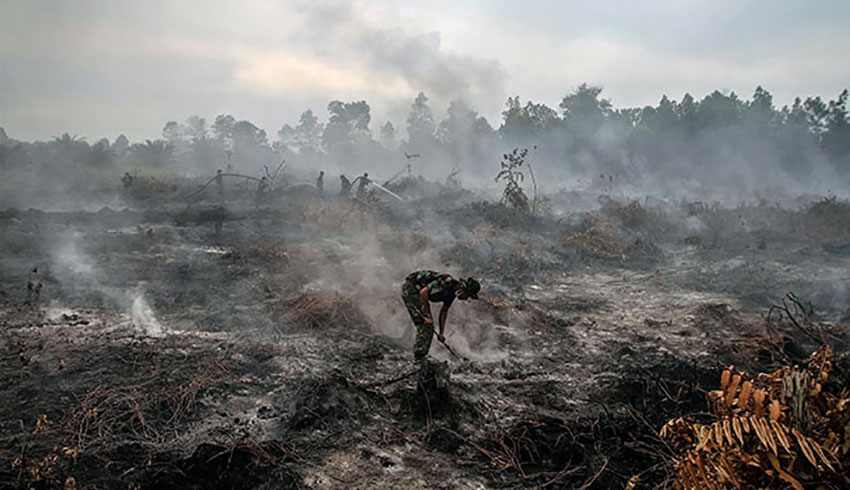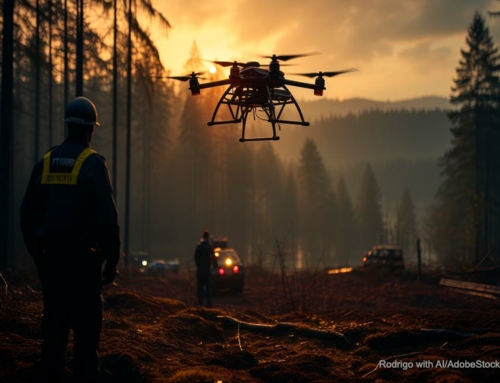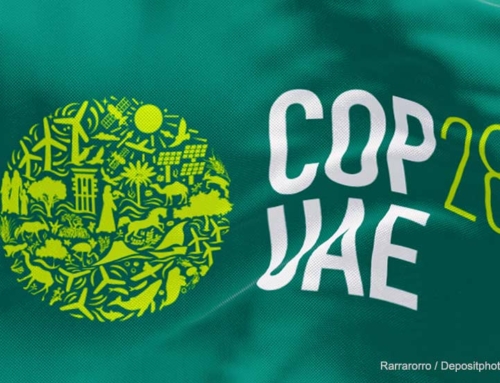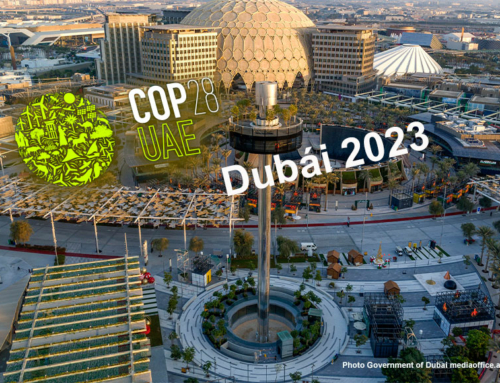“Borneo, a place where birds no longer sing and
orangutans are homeless.” Alex Shoumatoff
“Man has made the Earth hell for animals.”
Arthur Schopenhauer
Those of us who belong to the species Homo sapiens owe our name and surname to our two main characteristics: we are human, and we are endowed with the ability to think. When one enters Borneo and focuses on the microscope to learn more about what has happened on the enormous island in the last 50 years, it concludes that those responsible for the greatest environmental catastrophe in the history of the Earth have not they qualify to be sapiens.
The mega-predators
These men and women destroyers of the world must be placed in a new classification, a new species or subspecies, due to their very high aggressiveness and enormous capacity to produce damage to nature. Their reflexive lack to measure the consequences of their actions, which is not greater than that of a moth or locust, places them on a scale that we could call something like Homo predator. These mega environmental predators are scattered all over the planet, but it is in the rainforest of Borneo where their devastating action broke all the molds of irresponsibility and allowed the gravity of their actions to come to light with the transparency of the finest crystal.
And where is Borneo?
Borneo occupies the third position among the largest islands on Earth and is larger than France. It is in Southeast Asia, 1600 km south of Vietnam, west of Papua New Guinea and 3500 km north of Australia. Borneo, called Kalimantan in Indonesian, is divided politically into three parts: Malaysia has 26.7%, Indonesia 72.6% and Brunei less than 1%. Borneo is inhabited by 16.4 million of people.
A purely artificial disaster
In the last half century, the rainforest of Borneo lost more than 70% of its trees and an enormous amount of habitats at the expense of the wood industry and other activities that developed with an unusual speed on the island. From the end of the 1960s, hostile deforestation began in Borneo, through intensive tree felling, which took on special force in the 1980-1998 period. The rainforest, where wetlands and marshes made it difficult to light a fire, became an arid territory prone to continuous forest fires, many of them intentional, with local effects and in more remote regions. There are experts who believe that the great forest fires that have occurred in the last decades in the distant Australia and Chile are related to the drastic climate change of Borneo. What happens in Kalimantan is not a natural disaster as a result of an earthquake, a hurricane or a volcanic eruption. It is a artificial disaster, made of Homo sapiens, the most aggressive and armored species that has arrived on the planet.
Borneo, a nightmare
“Until 1950, 96% of the island was primary forest, while today only 44% remains. The destruction does not slow down, but increases its speed”, says WWF. Some scientists say that what happened in Borneo is the biggest and fastest ecological catastrophe made by man in the history of mankind. In May 2007, 1,500 scientists from 70 countries wrote a document describing the Borneo situation as “critical” and urging immediate action. However, little has been done so far. According to Greenpeace, at the current rate, in 2022 98% of the primary forest, habitat of the orangutan, will have disappeared. The Guinness Book of World Records marked Indonesia in 2008 as the world champion of deforestation. In SGK-PLANET we have written that Borneo is an ecological catastrophe, a nightmare, a horror movie, a mirror to look at us, a bad example that should never be followed anywhere in the world. The recent history of Borneo is the largest and most dramatic case of local climate change produced by human hands. There are no doubts. In just half a century some humans destroyed in Kalimantan what it took nature to build 130 million of years. The damages are irreversible.
Ancient jungles transformed into single-use toothpicks
Before the massive deforestation to which it was subjected, the Borneo rainforest was almost impenetrable due to the large number of trees and other plants that made it up. During hostile deforestation the island became the largest exporter of timber in the world, even above the Amazon and Africa combined. The varied trunks of Borneo came to China, Japan, the United States and Europe, where its main buyers were, becoming wooden houses, parquet floors, furniture, paper, toothpicks and other artifacts made of noble plant fiber.
Changing old trees for African palms
Industrial timber trade began to take hold in the 1970s. “Indonesia’s President Suharto distributed large tracts of forest to consolidate his political relations with army generals. Deforestation increased significantly in the 1980s, with the creation of roads for settlers and developers to access remote areas”, according to Mongabay. The Sarawak and Sabah states of East Malaysia, in the north, occupied about 26% of the island. The forest area declined sharply due to intense felling for the plywood industry. The trees extracted in record time were leaving huge empty spaces on the large island, which were almost simultaneously occupied with African palm or oil palm sowings, known for its negative environmental impact, such as soil degradation, habitat loss and extinction of species. After Suharto left power, in 1998, a complicated plot of powerful families, front men, politicians, corporations, corruption and mafias was formed, fighting over the oil palm business, the origin of the second wave of destruction of the rainforest, habitat of one of the greatest biodiversity in the world, which has not stopped until today.
An efficient plant that produces an oil cheap but very questioned
The oil palm is a plant that in a single hectare can produce about 6,000 liters of crude palm oil, several times higher than that obtained with soybean oil or corn oil, which makes it very profitable. Therefore, it is preferred by large corporations for food, cosmetics and other products, although some of them in recent years, due to public pressure, have canceled their relations with the large suppliers of the questioned natural resource.
How could a forest of wetlands and swamps be turned into land permanently burned?
With the entry of the new plantations, fires in the jungle increased. Burning is the most economical method to clear land for planting. The oil palm has a surprising adaptation to the scorched earth. Fire is also used as an expulsion weapon in the struggle for land tenure. In both cases it is used in a controlled manner, but during the droughts the fires have gone out of control, spreading quickly and forcefully, burning large areas of forest. Greenpeace International accounted for 112,000 fires in just three months in 2015. About 40% of these fires occurred in concessions made by the Indonesian government to companies for the cutting down of trees or the development of palm plantations.
A succession of catastrophic fires
In 1994, a large fire destroyed 4 million hectares. However, the worst fires so far have been those of 1997 and 1998 in Indonesia. The disaster devastated more than 10 million hectares of forest, causing serious health problems for the population and affecting the tourism industry. According to the newspaper El País of Spain, a satellite surveillance program has been established since then, under the UN, which allows locating the most serious outbreaks and measuring the extent of the fires. But in 2001 the alarms went off again when a raging fire broke out that threatened to surpass all the previous ones, but finally it could be controlled. But those surveillance and control measures had little effect. Smokes and fires arrived in Borneo to stay 365 days a year. Homo predator no knows armistices or trial and error.
The fireproof peat bogs the homo predator can also burn them
Mongabay, in an extensive and courageous investigative journalism work, “Indonesia for Sale,” conducted in conjunction with The Gecko Project, explains: “Borneo forests retained immense amounts of carbon that were released when they were cleared to make way for plantations. In the southern sections of the island, much of this jungle grew in peat bogs, it was composed of deep layers of organic matter accumulated over thousands of years. To plant in peat, palm oil producers dug huge ditches to drain the water. This caused them to decompose rapidly, which released powerful greenhouse gases into the atmosphere. The dry peat was also highly flammable. (…) In 2006, Indonesia experienced one of the worst seasons of fires that are remembered, when smoke from fires throughout Sumatra and Kalimantan triggered a carbon bomb and covered the region in a haze visible from space.” According to Wikipedia still today fires are caused annually to clear the land in agricultural areas and degraded forests.
Up to underground fires in the jungle fires menu
Peat in its natural state is one of the most difficult organic matters to burn. Professor Susan Page, a geographer at the University of Leicester and an expert on Indonesian peat bogs, explains the cause of the problem: “Ironically, intact peat bogs are actually very resistant to fire, as they are protected by a high-water table. The problem arises when the peat bogs are exhausted, usually for conversion to agriculture or for logging. Dry peat ignites very easily and can burn for days or weeks, even burns underground and emerges again away from the initial source. This makes this type of fire very difficult to extinguish, with a slow combustion with high levels of gases and harmful particles “, via Apespan.
Trees and other Borneo plants razed by the homo predator
Borneo has 15,000 plants (6,000 endemic). The mangrove is found in coastal regions. With an estimated extension of 1.2 million hectares, it occupies only 20% of its original extension. The peat swamp forests covered more than 10 million hectares in 2002 and we have already seen the consequences of the human intervention to which they have been subjected. The mountain or montane forests of Borneo occupy the high areas of the island. In 2002 it was estimated that about 70% of the original mountain forests remained. The forests of dipterocarps are the most biodiverse of Borneo, although they are also the most threatened. More than half of the original area covered by this ecosystem has been deforested in Malaysia, and about 70% in Indonesia.
The fauna of Borneo victims of the catastrophe
The WWF estimates that the island has at least 222 species of mammals (44 of them endemic), including 13 species of primates; 420 resident birds (37 endemic); 100 amphibians; 394 fish (19 endemic).
The orangutan, icon of Borneo
Orangutans are only found in the rainforests of Borneo, where there are three subspecies, and in Sumatra where two subspecies live. These reddish-brown primates spend the longest time in the treetops, where they eat, rest and move at full speed from branch to branch thanks to the two meters of wingspan of their arms. These skilled forest trapeze artists are considered the most intelligent among primates. They can use a variety of sophisticated tools and prepare in a matter of minutes complex nests to spend the night in the branches. They have been widely studied for their learning abilities. At the Atlanta Zoo two orangutans from Sumatra can play with touch screen computers. A 2008 study of a pair of orangutans at the Leipzig Zoo showed that they could use “calculated reciprocity”, which implies weighing the costs and benefits of gift exchanges. These primates are the first non-human species capable of carrying out this activity. The orangutan is a peaceful animal, usually friendly that should deserve our respect and not the mistreatment, capture and extermination to which it has been subjected.
The tragedy of the orangutan, in the middle of the environmental catastrophe
The orangutan has a life expectancy of 30 years, the same period in which the deforestation of 70% of the island occurred. In those three decades the groups of apes saw disappear before their eyes the kind forest that served as shelter and food for their ancestors for hundreds of thousands of years. It is hard to imagine, because the trees are the habitat of these primates, the tragedy that meant the intensive felling and burning of the forests of Borneo. Disoriented, the apes, without a home or food, fled to the agricultural areas, seeking to nourish themselves with the fruits of the oil palms, to which they were already adapting. But instead of finding the sustenance they were looking for, they found themselves face to face with the firearms of the homos predators, who gave plague treatment to the noble animals for coming to steal their crops. Without thinking twice, they were shot down with their rifles, in an asymmetric, cruel and inhuman killing, which should be considered a crime against nature. In August 2006, the Wildlife Conservation Society (WCS), through its program in Indonesia, stated that the population of orangutans in that country was 20,000 animals, against the 35,000 that were in 1996. Due to its low reproductive rate, some environmental groups have warned that the red ape could become extinct in nature if urgent measures are not taken for its conservation.
The desertification of the Earth can be the greatest danger and in a very short time
The great fires of Borneo produce pollution, the so-called “fog”, which can reach Australia, China, India and even distant Chile. Fires release large amounts of carbon dioxide, especially when the Borneo peat is burned. According to Mongabay, with 518 tons of carbon per hectare – one of the highest levels of biomass on the planet – these ecosystems can release up to 2 billion tons of carbon dioxide into the atmosphere in some years, making Indonesia the third. most important greenhouse gas emitter, despite having only the 22nd largest economy in the world. Some scientists are concerned that fires and climate change can provide positive feedback that only worsens conditions, producing increasingly dry climates, increasing the number of fires and producing higher carbon emissions.
It is a priority to prevent history from repeating itself in the Amazon
The Amazon rainforest goes by the same way of Borneo, with the difference of which its surface is six times greater. The catastrophe that would mean not being able to stop the action of Homo predators in the huge South American rainforest is unimaginable. If it is not possible to stop the damage to the lung of the world we could witness permanent desertification and drought in the Amazon itself, then it would spread south from the Andean mountain range to Tierra del Fuego and north from the Caribbean area to North America. Finally its influence would acquire global character. It is everyone’s duty to avoid it.
Sandor Alejandro Gerendas-Kiss
Sources:
The Daily Beast. Alex Shoumatoff. Where the Earth’s Forests Are Deadly Silent. Retrieved from https://www.thedailybeast.com/where-the-earths-forests-are-deadly-silent
NASA. Fire and Smoke. Smoke and Fires in Sumatra and Borneo. Retrieved from https://www.nasa.gov/image-feature/goddard/smoke-and-fires-in-sumatra-and-borneo
Retrieved from https://www.google.co.ve/amp/s/amp.theguardian.com/world/2010/oct/24/borneo-indonesia-rainforest-illegal-logging
Mongabay. News. The Palm Oil Fiefdom. Retrieved from https://news.mongabay.com/2017/10/the-palm-oil-fiefdom/







Leave A Comment